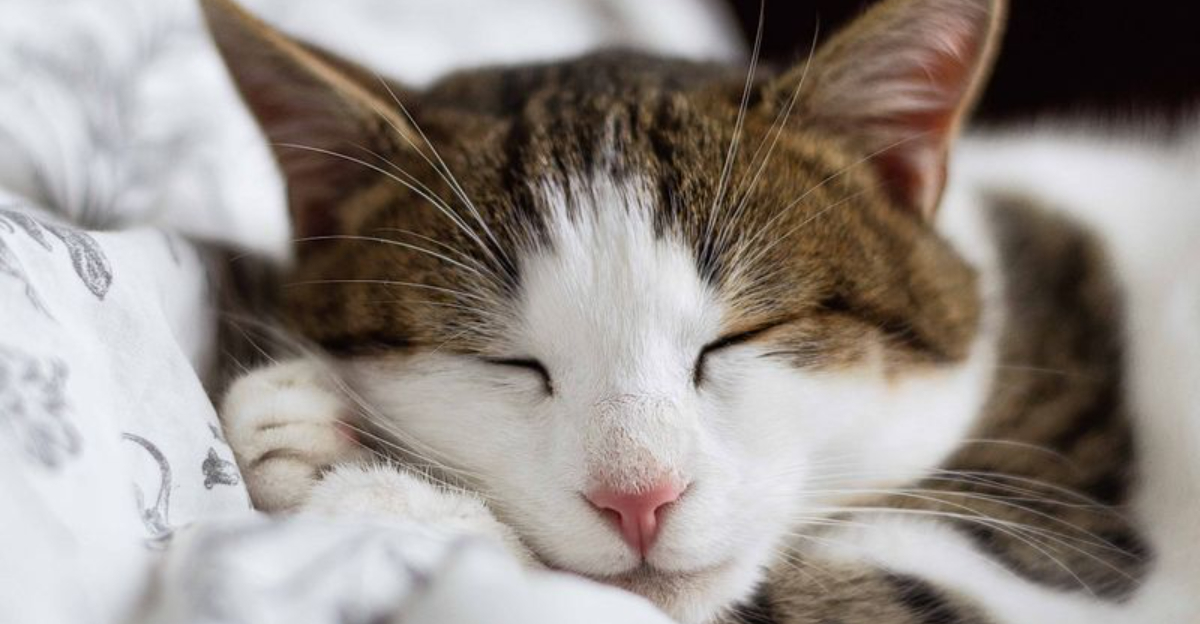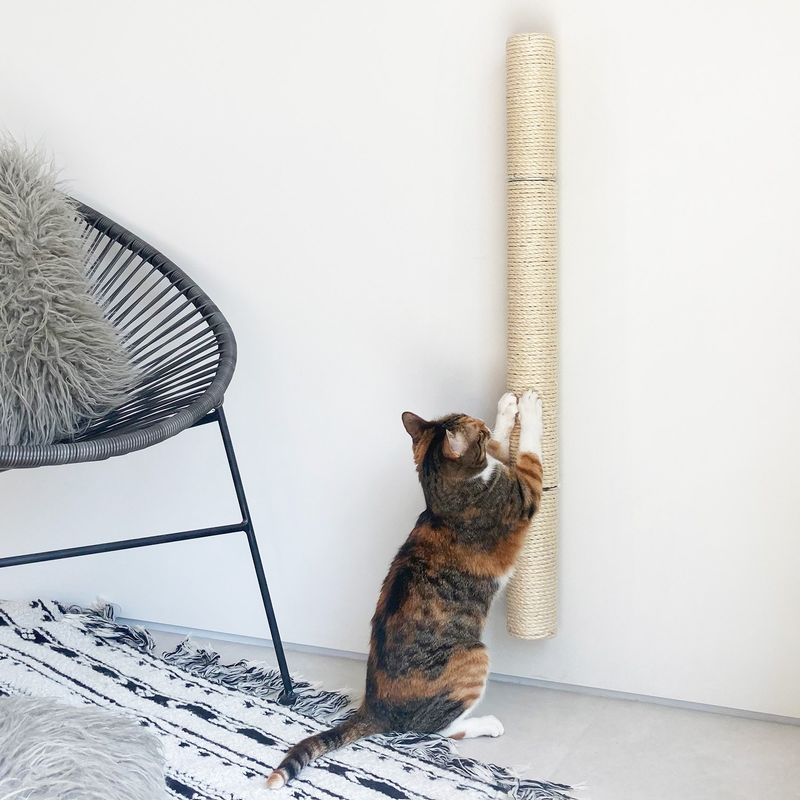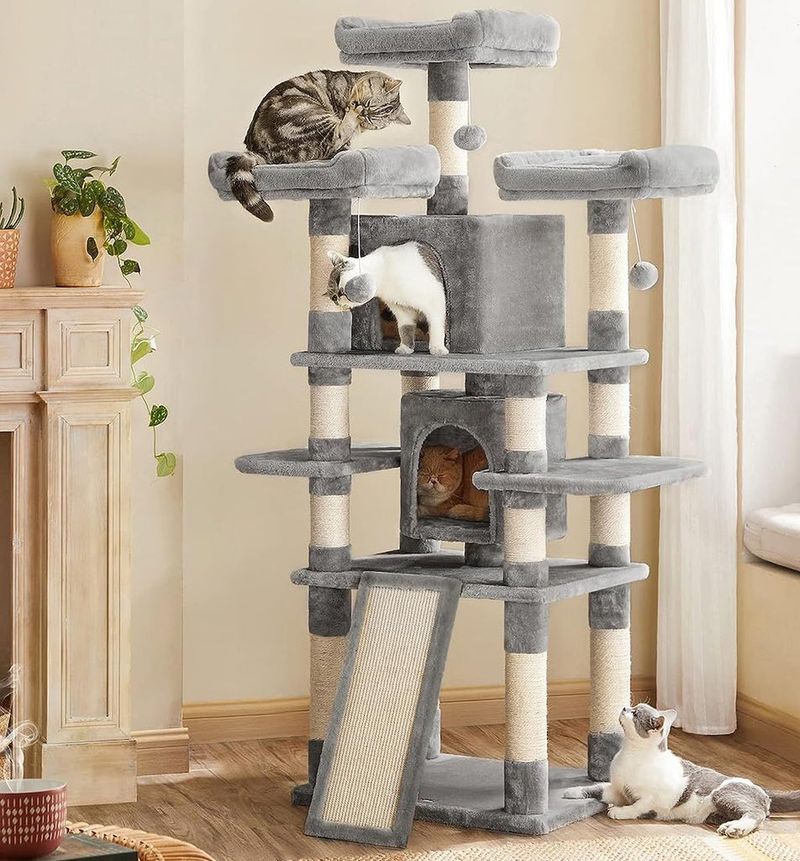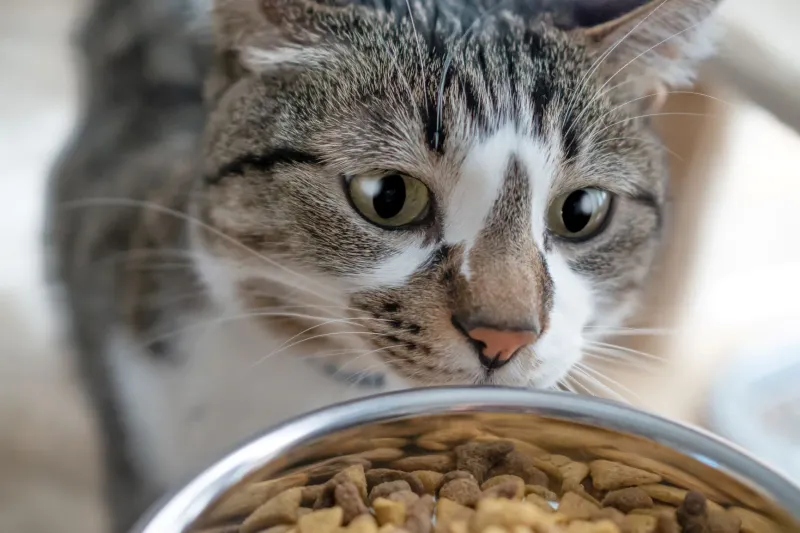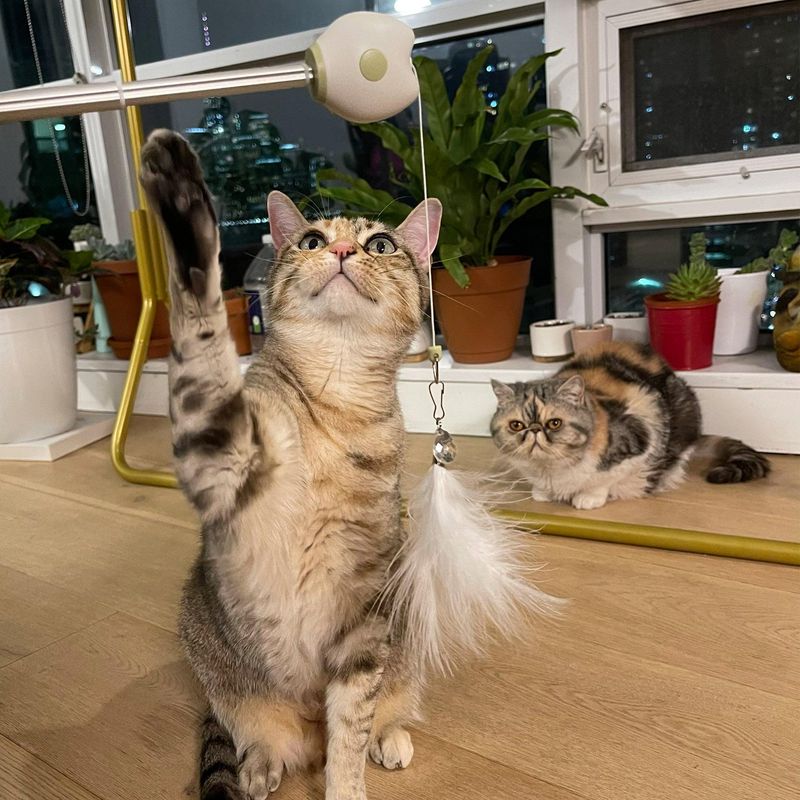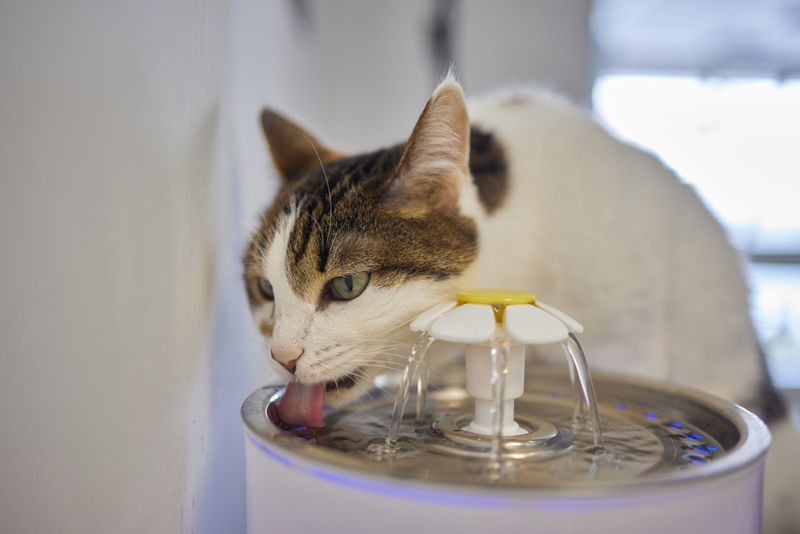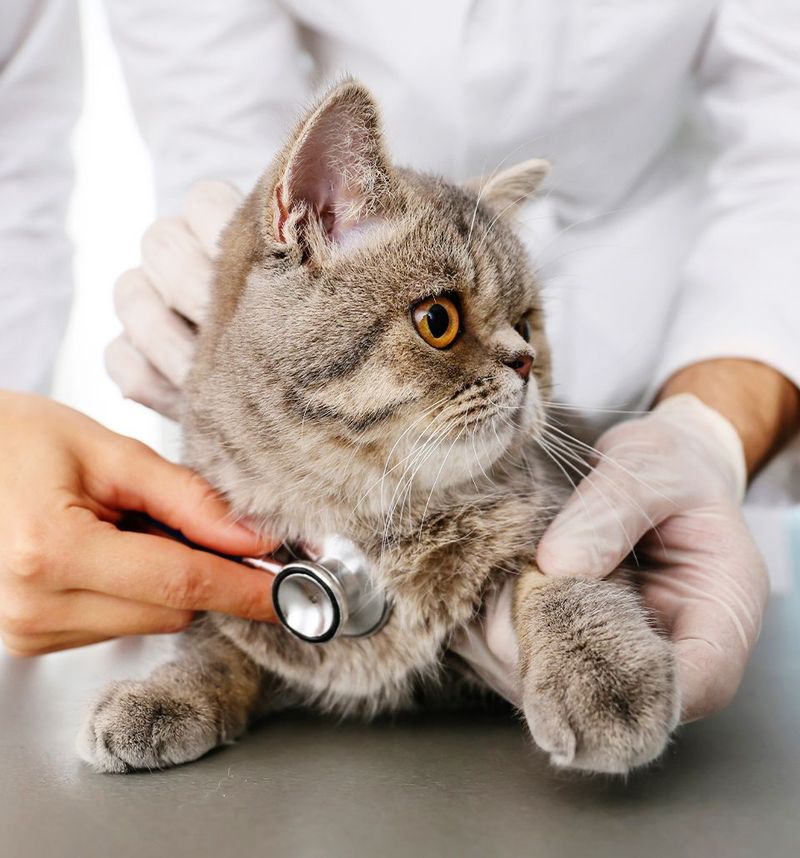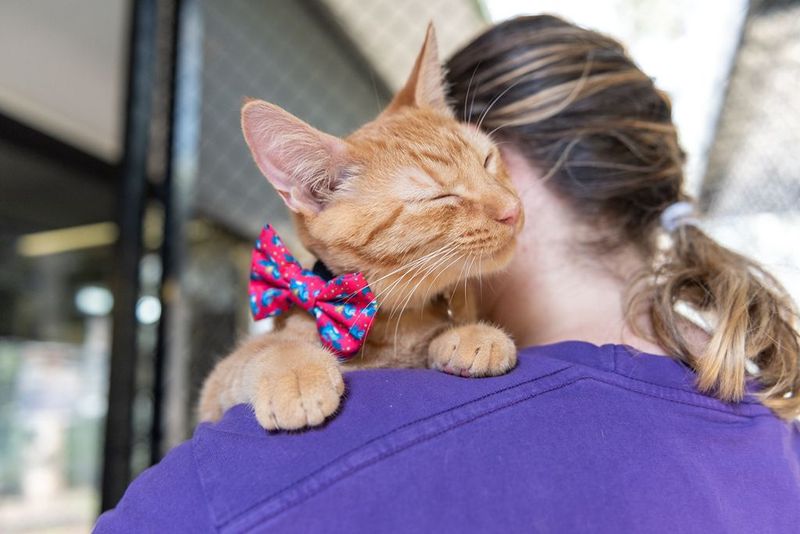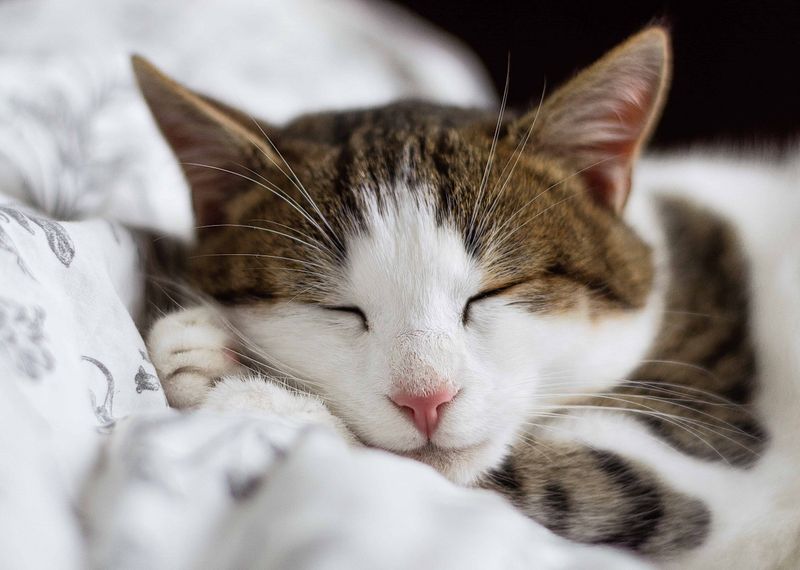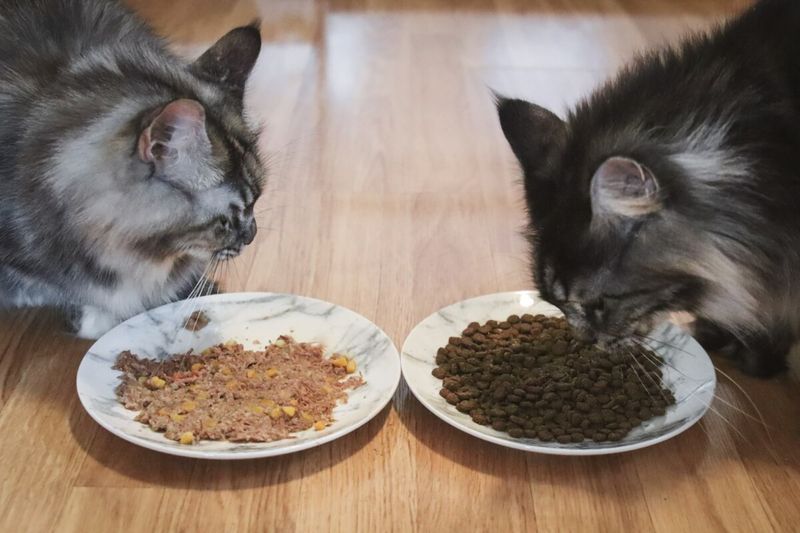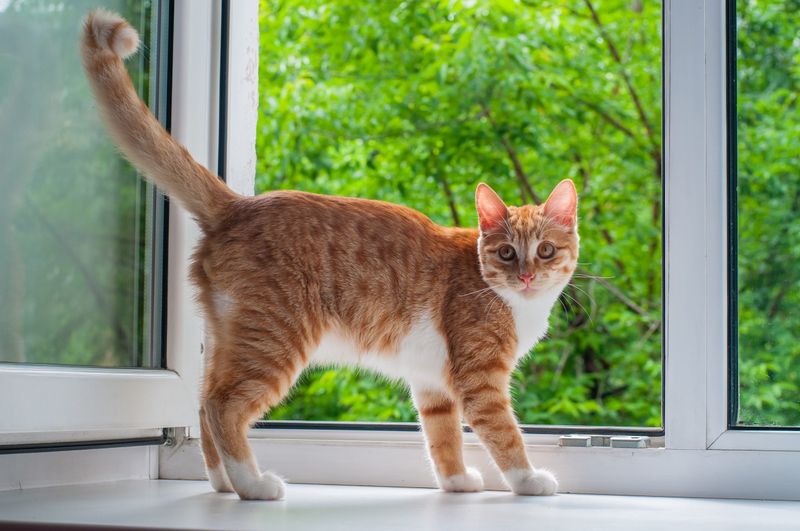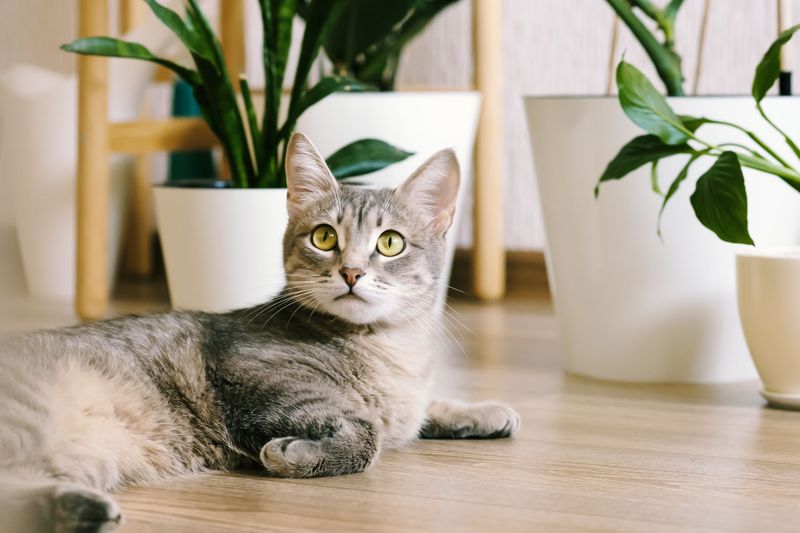📖 Table of Content:
- 1. Provide a Dedicated Scratching Post
- 2. Create Vertical Space for Climbing
- 3. Establish a Consistent Feeding Schedule
- 4. Make Playtime a Daily Priority
- 5. Provide Fresh Water in Multiple Locations
- 6. Schedule Regular Veterinary Check-ups
- 1. Never Force Physical Interaction
- 2. Never Punish Your Cat
- 3. Never Ignore Sudden Behavior Changes
- 4. Never Feed an All-Dry Diet
- 5. Never Leave Windows Unsecured
- 6. Never Overlook Toxic Household Items
Cats bring joy, companionship, and a touch of mystery into our homes. As independent as they seem, our feline friends rely on us for their well-being and happiness. Understanding what makes cats thrive—and what harms them—can make all the difference in your relationship with your furry companion. Let’s explore the essential dos and don’ts of cat care that every cat parent should know.
1. Provide a Dedicated Scratching Post
The urge to scratch is natural for cats—it sharpens their claws, stretches their muscles, and marks their territory. Without proper outlets, expect your furniture to be the victim.
Set up multiple scratching posts throughout your home, especially in areas where your cat spends the most time. Look for sturdy, tall posts that won’t topple when your cat leans into a good scratch.
Experiment with different textures like sisal, cardboard, or carpet to discover your cat’s preference. Some cats prefer horizontal scratchers while others love vertical posts.
2. Create Vertical Space for Climbing
Cats are natural climbers who love surveying their domain from up high. This instinct dates back to their wild ancestors who climbed trees for safety and to spot prey.
Cat trees, shelves, and perches satisfy this climbing instinct while providing exercise and mental stimulation. The vertical territory is especially important in multi-cat households, allowing cats to establish hierarchy without conflict.
Even in small apartments, wall-mounted shelves create valuable vertical real estate. Your cat will thank you with purrs of appreciation as they lounge regally on their elevated throne.
3. Establish a Consistent Feeding Schedule
Feeding cats on a set schedule supports their well-being better than free-feeding, which often causes weight issues. Typically, two portion-controlled meals daily work best for adult cats.
Quality matters more than quantity. Look for foods with meat as the first ingredient and avoid fillers like corn and wheat. Wet food provides crucial moisture that many cats don’t get enough of through water alone.
Consider puzzle feeders to make mealtime mentally stimulating. These special dishes make your cat work for their food, mimicking natural hunting behaviors and preventing the boredom that comes with eating from a regular bowl.
4. Make Playtime a Daily Priority
Regular play sessions keep your cat physically fit and mentally sharp. Even just 15 minutes twice daily can prevent behavior problems and obesity. Interactive toys that mimic prey movements are particularly engaging.
Rotate toys weekly to maintain interest. Something as simple as putting certain toys away for a few days makes them exciting again when reintroduced. Wand toys with feathers or mice attachments allow you to mimic the erratic movements of prey.
Morning and evening play sessions align with cats’ natural hunting times. End play sessions with a small treat to simulate the satisfaction of a successful hunt and strengthen your bond.
5. Provide Fresh Water in Multiple Locations
Many cats drink insufficiently, leading to urinary tract problems and kidney issues. Their ancestors were desert animals who got moisture primarily from prey, not from drinking water directly.
Place water bowls away from food stations—cats instinctively avoid water near their food to prevent contamination. Wide, shallow dishes allow cats to drink without their whiskers touching the sides, which many cats find uncomfortable.
Flowing water from pet fountains often entices reluctant drinkers. The movement appeals to cats’ preference for fresh water sources. Change water daily and wash bowls regularly to prevent bacterial growth that cats can detect even when we can’t.
6. Schedule Regular Veterinary Check-ups
To avoid looking weak in the wild, cats evolved to mask signs of illness. As a result, health problems often go unnoticed until they’ve become serious.
Annual wellness exams catch problems early when they’re more treatable and less expensive. Senior cats (over 7 years) benefit from twice-yearly visits as age-related issues develop more rapidly.
Establish a relationship with your vet when your cat is healthy. This creates a baseline for comparison and makes visits less stressful. Consider carriers with removable tops and calming pheromone sprays to reduce travel anxiety. Your proactive approach could add years to your cat’s life.
1. Never Force Physical Interaction
Respect for boundaries builds trust with cats. Unlike dogs, cats prefer to initiate contact on their terms. Forced petting or holding creates fear and damages your relationship.
Learn to recognize subtle signs of discomfort: tail twitching, ears flattening, skin rippling, or dilated pupils. These signals precede scratching or biting and should be heeded immediately.
Allow your cat to approach you. When they do, keep interactions positive and brief at first, gradually extending as trust builds. This patient approach results in a cat who actively seeks your companionship rather than avoiding you. The bond formed through respect is far stronger than one built on forced interaction.
2. Never Punish Your Cat
Cats don’t understand punishment—they only learn that you’re unpredictable and frightening. Yelling, spraying water, or physical discipline destroys trust and creates anxiety.
Redirect unwanted behaviors instead. If your cat scratches furniture, gently move them to an appropriate scratching post. Make the right behaviors rewarding and the wrong ones boring or inaccessible.
Cats live in the moment and can’t connect punishment with past actions. What looks like guilt is actually fear of your reaction. Focus on prevention and positive reinforcement—rewarding good behavior builds the habits you want while strengthening your bond.
3. Never Ignore Sudden Behavior Changes
Behavioral shifts are often the first sign of medical problems in cats. The suddenly aggressive cat might be in pain. The once-fastidious cat now avoiding the litter box could have a urinary tract infection.
Changes in eating, drinking, elimination habits, activity levels, or social interactions warrant veterinary attention. These alterations rarely resolve without intervention and typically worsen over time.
Keep a simple log of unusual behaviors, including when they started and any potential triggers. This information helps your veterinarian make an accurate diagnosis. Prompt medical attention for behavioral changes can mean the difference between simple treatment and serious complications.
4. Never Feed an All-Dry Diet
As desert dwellers, cats developed kidneys that retain water efficiently. In the wild, they’d get most of their moisture from prey, which makes wet food (70–80% water) a closer match than dry kibble (only 10%).
Chronic dehydration from all-dry diets contributes to kidney disease, urinary crystals, and bladder inflammation. These conditions are painful, expensive to treat, and potentially life-threatening.
Transitioning to wet food can dramatically improve hydration. If your cat resists, try gradually mixing increasing amounts of wet food with decreasing amounts of dry. Even replacing one meal daily with wet food makes a significant difference in your cat’s long-term health.
5. Never Leave Windows Unsecured
High-rise syndrome—cats falling from heights—causes thousands of veterinary emergencies annually. Even careful cats can fall when startled by birds, distracted by moving objects, or drowsy from sunbathing.
Install secure window screens or guards that withstand a cat’s weight. Adjustable screens fit most windows and provide protection while still allowing fresh air. Cat-specific window perches with secure attachments give your cat safe outdoor viewing.
Beware of tilted windows, which can trap and fatally injure cats. Never assume your cat “knows better”—their prey drive can override caution in an instant. The minor inconvenience of secured windows prevents heartbreaking accidents.
6. Never Overlook Toxic Household Items
Because cats investigate with their mouths and paws, ordinary household objects can pose serious dangers. Lilies are a prime example—just brushing against the pollen can be fatal.
Medications left on counters, essential oils in diffusers, and household cleaners on recently mopped floors pose serious risks. Even some foods we enjoy—like onions, garlic, chocolate, and artificial sweeteners—can be deadly to cats.
Store hazardous items in cabinets with child-proof locks. Research plants before bringing them home, and keep medications in closed containers. Have your veterinarian’s phone number and the Pet Poison Helpline (855-764-7661) readily available for emergencies.
